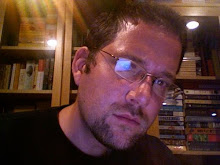
Well, I was so intrigued by the complex modern origami I described in my previous post that I printed out Robert Lang’s fiddler crab “crease pattern” and started folding away, with utterly no knowledge of the techniques involved.
After about an hour of pre-creasing and tentative folding I started to see how the creases more or less might work, and started bunching the paper up along the folds. It started to look like a sea urchin or something, but I could see no sign of a body or other reference point. I didn’t know what was legs and what was claws.
I then looked around and found some more real-world shots of the finished model, and tried to use them for reference.
 But I still had no reference points for where the main body area was supposed to be. I tried for a while then eventually just sort of manhandled it into a vague crab shape. It looks both scary and sort of retarded, like the Garthim from The Dark Crystal. Scroll down to see my masterpiece, if you dare.
But I still had no reference points for where the main body area was supposed to be. I tried for a while then eventually just sort of manhandled it into a vague crab shape. It looks both scary and sort of retarded, like the Garthim from The Dark Crystal. Scroll down to see my masterpiece, if you dare.I looked around a bit and I now realize that this is like the only asymmetrical origami model in history. The guy designed it using some sort of portal to the 24th dimension, as far as I can understand according to this interview. It’s probably the hardest possible thing to start with. So I don’t feel bad that mine looks like it scuttles on the short bus. I’ll just have to start with something easier, like an origami model of a brick, rock, or fruit roll-up.


No comments:
Post a Comment